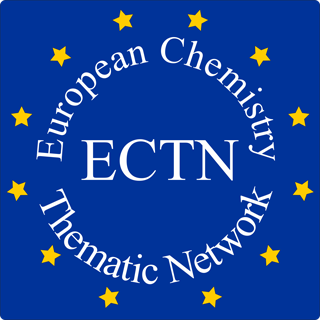Background
Introduction
The European Commission White Paper on education and training “Teaching and Learning: Towards the Learning Society” which was approved by the Commission in November 1995 had five general objectives, the first of which was to “encourage the acquisition of new knowledge” (objective 1): http://ec.europa.eu/education/doc/official/keydoc/lb-en.pdf.
The White paper states that a multitude of incentives to learn must be provided, and launched an action concerning the recognition of skills at the European level as one of the ways to provide these incentives. As part of this “Objective 1” of the White Paper, the European Chemistry Thematic Network (ECTN) was awarded a contract for a project entitled “The Evaluation of Core Chemistry”.
Project Description
The chemistry project, one of 16 projects funded by the European Commission, was started in 1996, covering the following periods: 1996-2000 (ECTN1), 2000-2003 (ECTN2), 2003-2006 (ECTN3, “The New Generation of Chemists”), 2006-2009 (ECTN4, “Chemistry in the European Higher Education Area”), 2009-2012 (ECTN5 renamed EC2E2N1 due to the fact that the Chemistry Thematic (CT) had been converted into Chemistry and Chemical Engineering and Education (C2E2)) and then 2009-2012 (EC2E2N2).
Through the different periods of the project the EChemTest® roadmap was articulated as follows:
- The common content of first degree courses in chemistry (Core Chemistry) in all EU Member States in the Chemistry subareas Physical Chemistry, Organic Chemistry, Inorganic Chemistry, and Analytical Chemistry was identified and formalized in a Syllabus (http://services.chm.unipg.it/ojs/index.php/virtlcomm/article/view/100)
- Libraries of Questions and Answers (Q&A) in English for these subareas were designed, implemented and tested to the end of evaluating competence at Bachelor level (level-3) by running Self Evaluations Sessions (SES)s of computer-based tests (e-tests).
- Libraries have been extended to evaluate competence in Biological Chemistry (level-3) and to General Chemistry at two levels: a level equivalent to that of a person at the end of compulsory education (level-1), and a level equivalent to that of someone about to commence a university course in chemistry (level-2).
- Some of the tests have been translated into different European languages and an extension of the Libraries to Master (level-4) subjects (like Computational Chemistry, Conservation Science and Advanced Organic Chemistry) was also made.
Computer Platform
The e-tests were first produced using the commercially available software QuestionMark Designer for Windows and Libraries were distributed by circulating copies on disk. Later the Libraries became available on the net and the sessions were run at the TCs using Internet technologies and the QuestionMark Perception (http://www.questionmark.com/) software was adopted.
Several types of Q&A formats were available (multiple choice, multiple response, numeric, selection, text, graphical ‘hot-spot’, problem solving, etc.) and a detailed analysis of the responses to questions was possible. In order to limit the costs, the Licenses used were of the academic type allowing a limited number of TCs and excluding commercial activities. Further limits of the adopted QuestionMark Perception license were the practical impossibility of exporting the Libraries and the impossibility of influencing the policy of the software producer.
Acknowledgement
The funding of the European Commission made it possible to more than 100 Departments or HEI of Chemistry from over 30 countries to collaborate in defining the “Core Chemistry” and then design and develop the full Q&A database and relevant translations. We thank all the people who took the time to create, to write, to check, to send comments and advice; those who run the pre-testing allowing us to improve the quality of our database, as well as those who joined us and will join us in the future, and those who will help us either to develop our product or the Association.
